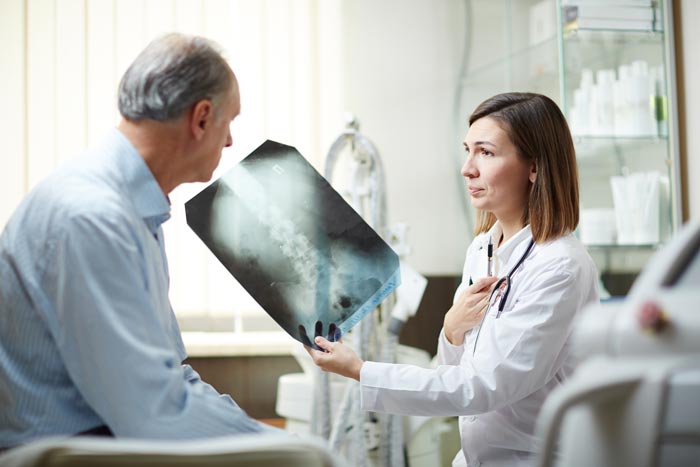Diagnosing & Treating Scoliosis
A doctor’s examination will include taking a detailed medical history of the patient, including times of growth spurts, birth defects, injuries or trauma, and any other issues that may be associated with scoliosis. A physical exam will also be performed in which the doctor will check for muscle reflexes, weakness, and abnormal physical symptoms, including curvature of the spine.

Tests for Scoliosis
X-Ray
An X-ray image of the spine will allow for identification of the curve, as well as measurement of the angle. Curves greater than 20 degrees may require treatment.
Computerized Tomography
Computerized tomography (CT) is a noninvasive procedure that uses x-rays to produce a three-dimensional image of the spin.
Magnetic Resonance Imaging
Magnetic resonance imaging (MRI) scans may be necessary if an underlying cause of scoliosis is suspected. An MRI uses magnetic fields and radio-frequency waves to create a detailed image of the spine. An MRI scan can also show evidence of previous injuries that may have healed and other details in the spine that may be contributing to the scoliosis that can’t normally be seen on an X-ray.
Bone Scan
Radioactive material is injected into the vertebrae, making details of the spine curve more visible.
The doctor will diagnose the scoliosis based on the location, shape, pattern, and cause of the disorder. This group of facts will help the doctor create a treatment plan most beneficial to the patient’s individual case.
Scoliosis Treatment Options
Treatment for scoliosis varies, depending on the severity and cause of the disorder:
Observation
The mildest forms of scoliosis are simply observed to see if, over time, the disorder stops progressing on its own. Some non-invasive treatments may be used, such as physical therapy, CAM (complementary alternative medicine such as acupuncture or chiropractor), nutritional supplements, and electrical stimulation. (These treatments may help with pain management, but have not been proven to halt the curve progression.)
Bracing
An adolescent who is still growing may be required to wear a brace in order to halt progression of the curvature, especially if the curve is more than 25 to 30 degrees, if the patient is still growing, or if the patient is a girl who has not begun menstruating.
Surgery
Surgery may be necessary for severe cases in which the scoliosis is worsening and debilitating. Surgery is recommended for curves that greater than 45 degrees and getting worse. The goal of surgery is to correct the curve and stop it from getting worse if a patient is still growing. Surgery for scoliosis may also be indicated if there are cardiac or pulmonary complications due to the scoliosis.
We’ve Got Your Back
For more information about our treatment options, contact our office today.



